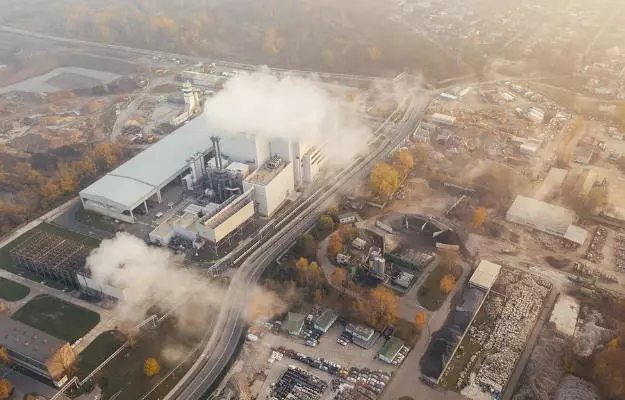An industrial gas leak in the south Indian city of Visakhapatnam has led to hundreds being hospitalized and large-scale evacuation from the site of the incident. Styrene, the gas reported to have leaked from a chemical plant that was left unattended during the lockdown, is primarily used in the mass production of plastic, fibreglass and rubber-based items. Here's everything you need to know about the gas leak, and the effects of styrene on the body:
Where and when did the gas leak happen?
In the early morning hours (2.30-3 am) of 7 May, locals reported a toxic gas leak from a chemical plant in Visakhapatnam, Andhra Pradesh, to the police. The leak originated from a multinational firm, LG Polymers. Two 5,000 tonne tanks leaked; they were unattended since the COVID-19 lockdown had been put into place.
Eleven people, including a child, have died, and 800-1,000 have been admitted to local hospitals. The National Disaster Response Force was brought in to contain the leak, and help people get to the hospital.
Styrene gas, which reportedly leaked from the tanks, is toxic in large concentrations. Locals said there was a burning sensation in their eyes and they had difficulty breathing.
What is styrene and what is it used for?
Styrene is a colourless liquid. It is a derivative of benzene, which evaporates easily and has a sweet smell in its pure form. It is an organic compound which occurs naturally in some plants, bacteria and fungi, as well as foods such as cinnamon and coffee beans. Concentrated or manufactured styrene, however, tends to have an unpleasant odour as it is mixed with aldehydes and is present in combustive products including exhaust smoke released from automobiles.
Styrene is also used in large-scale production of plastic and rubber, including packaging material, insulating wires and electrical appliances in homes and commercial buildings. It is also used in the production of fibreglass, plastic pipes and automotive parts, as well as food packaging items such as disposable glasses and cups.
Is styrene harmful to health?
While naturally occurring styrene is present in small doses, the chemically produced version of the substance can lead to large-scale exposure. The degree of exposure, including the dose, duration and how one came into contact with it, would determine how one would be harmed by styrene.
How does styrene enter the body?
Styrene can break down quickly once it enters the environment, and the local population can become exposed by breathing air containing it. It is also detected in groundwater, drinking water or soil contents. Consuming or bathing in water that contains styrene can lead to low levels of exposure to the chemical. Factories that are in the business of manufacturing plastic pose the biggest threat of large-scale exposure, as workers or local populations may be exposed to a high concentration of styrene in the air.
Styrene can enter the body through the lungs by inhaling air containing the chemical, through the digestive tract from eating food or water containing it, or through the skin after coming in contact with styrene-containing liquid.
How does styrene affect the body?
Styrene can metabolise into styrene oxide once it enters the human body and is also considered to be neurotoxic. Some of the common health problems faced by workers exposed to large amounts of styrene are related to the nervous system, such as changes in colour vision, fatigue, feeling intoxicated, delayed reactions and loss of balance.
Can styrene cause cancer?
There is inconclusive evidence that long-term exposure may increase the likelihood of lymphoma and leukaemia. Not enough controlled studies have been done on this, though investigations so far have consisted of too many confounding factors to establish a causal link. Animal studies have been variable and there is limited evidence for carcinogenicity (ability to cause cancer).
The International Agency for Research on Cancer has classified styrene as a group 2B, meaning probable human carcinogen. While the evidence of styrene being a carcinogen is scarce, this does not mean it is not harmful; exposure exceeding allowed limits leads to both short term and long term health issues.
Could there be long-term effects of this gas on the health of those who live in the area?
Long-term effects of styrene include central nervous system (CNS) impairment and dysfunction (such as memory loss, cognitive disability), depression, fatigue, weakness and hearing loss. Animal studies have also shown adverse kidney, liver and gastrointestinal effects.
Human studies have not shown developmental or reproductive issues. Other studies have shown a lower frequency of births in those chronically exposed to the gas, but these are not causative studies.
A study on exposure in mice found that mice offspring had a higher likelihood of lung tumours, but again, the evidence is not conclusive.
Can something be done to minimize the effects of styrene gas after a leak?
Yes, the National Disaster Response Force sprayed water in the affected area to increase the speed with which the gas settles.
In the meantime, the general public in the area has been advised to stay indoors with their windows shut to avoid exposure.














